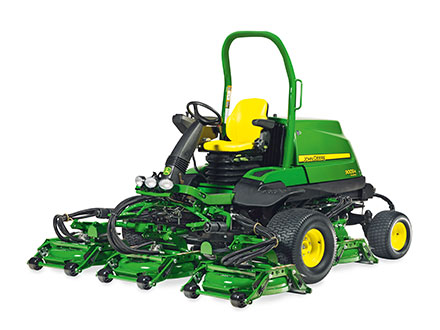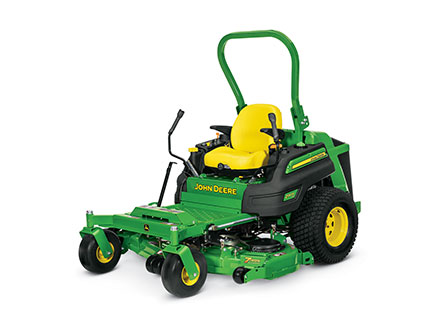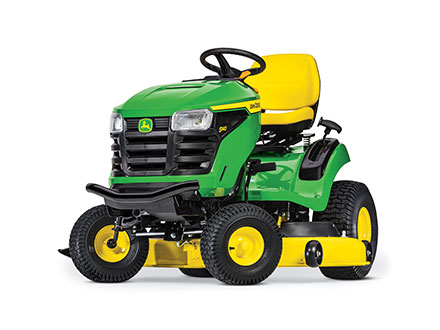Preparing Your Garden for Spring
Most gardeners think of winter as a quiet time, so the tools go back in the shed—only seeing the light of day again when the weather starts warming up.
But, if you truly want to make the most of your garden for spring, winter is the time to get ahead of the game. It’s the time to reset, assess, and plan for the year ahead—while getting some of the bigger jobs like mulching, weeding, and pruning out of the way.
In short, if you manage your garden well during winter, you’ll reap the rewards in spring. Here are our top tips to do just that.
Lawn Care
Your lawn growth will slow to a standstill as the temperatures fall, but there are still things you can do to give it the care it needs.
In winter, you might notice weeds popping up as they germinate in the cooler temperatures. To stop them spreading, simply pull them up by hand, and the job’s done!
If you’d like to mow your lawn over the winter months, we advise using a higher setting on your mower. The longer the grass, the better your lawn will photosynthesise, aiding healthy growth and keeping a nice, lush green colour (while avoiding yellow patches). Another quick tip to keep your lawn from looking too shaggy is to just trim the perimeter.
Finally, reduce wear and tear by avoiding walking or letting the kids play on the lawn too much. When your lawn is moist, it’s easy to accidentally compact the soil, which in turn, can lead to stunted lawn growth come spring time.
Plant Pruning and Hedge Care
Winter is a great time to prune deciduous plants and take care of hedges. Hydrangeas, for example, will drop their leaves and reveal their buds. When this happens, a good step is to use loppers or secateurs to prune off old flowering heads. But, be careful to leave any stems that are still yet to flower—these carry next season’s flowers, so you don’t want to lose them.
You can also get to work pruning your roses, which will help facilitate air circulation, reduce the risk of disease, and expose the full plant to as much sun as possible during the winter months. Aim for as clean a cut as possible with your roses—again, that means using a nice sharp pair of secateurs.
On the hedge front, a light trim with a sharp STIHL hedge trimmer is the best approach in winter. This is when your hedge is in its dormant period, so any hard pruning might expose any new growth to damage once frost arrives. While hedge finishing styles can vary, a decent hedge trimmer will leave a sharp, tight, natural looking finish.
Tree Pruning
As you might have guessed by now, winter is the time for pruning—and the same goes for your deciduous trees.
As the leaves drop, it becomes clear what you’re cutting, offering an opportunity to reduce the potential for any tree diseases that may have started forming. You can do this by removing any affected limbs past the signs of disease. We recommend tending to these issues in winter as they will start to spread when spring rolls around.
Unfortunately, spreading the disease to other trees (and other parts of the tree you are pruning) is easily done. To help avoid this, keep your tools clean, especially after pruning diseased limbs.
Identifying dead tree limbs
Another easy error while tree pruning is to mistake healthy limbs for dead limbs—and inadvertently trim the wrong ones.
A good way to be sure is with the ‘scratch test’. Using a sharp knife, gently scrape a thin layer of bark away, revealing green or live and wet woody tissue. To prune trees without damaging them, adopt a less is more approach. Removing too much foliage or exposing unprotected woody tissue leaves your tree susceptible to airborne bacteria.
Dead Leaves and Debris
As you know, autumn means fallen leaves, piling up across your property and potentially blocking drains and gutters. Leaf litter can also create a slipping hazard when the wet weather rolls around, so we suggest removing them as soon as possible—preferably while still dry.
For the best results and to get the job done quickly and easily, use a high-powered leaf blower. Even if you’ve left it until it’s wet outside, you can use a flat nozzle on your leaf blower!
One you’ve piled up your leaf litter, it can provide vital nutrients to your garden and top soil, while acting as a weed suppressant. Be careful not to use too many leaves (as this may smother your plants), so just add enough to let the plant matter underneath breathe. You should also avoid contact around the base of existing plants, as this can lead to moisture pooling and potential fungal diseases.
If you manage to collect an abundance of leaves before the rain hits, you can aerate your leaf litter before adding it to the compost by running dry leaves through a garden shredder—or by mowing over the top of them.
For everything you need to get your garden ready for Spring, visit our dedicated STIHL products.






